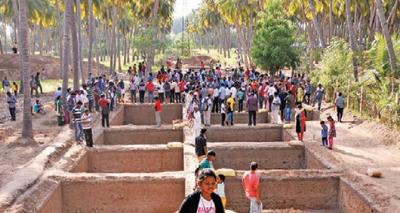
The Indus Valley Civilisation was part of the cop per age which dates back to 6000 BC but, interestingly, man was still in the stone age in southern India during that time, notes P D Balaji, head, department of history and archaeology, University of Madras . “In peninsular India, the chalcolithic (copper) age deposits overlap with the neolithic deposits of the stone age. There is neither pure neolithic culture nor pure chalcolithic culture in south India ,” Balaji said during the 23rd annual session of the Tamil Nadu History Congress at Periyar University in Salem on Sunday.
Balaji said the reason for the absence of the pure copper age in southern India still intrigues many archaeologists.At one point of time in India, both copper (in north) and stone (south) were used as raw materials for manufacturing tools. This might be the reason for the presence of copper implements mixed with the neolithic deposits, he said.
“The inverted firing technology used for manufacturing black-and-red-ware pottery had emerged in north India during the copper age itself. In many chalcolithic sites, including the later Harappan sites, black-and-red-ware sherds are found in plenty. However, the same technology took more than 1,500 years to reach the southern part. When it reached peninsular India, people were in the iron age,” he said.
The chalcolithic-era pottery of north India eventually became the characteristic pottery of iron age culture in south India. “Perhaps this sort of divergent chronology leads one to interpret that development first took place in north India, from where it penetrated to other parts,” said Balaji, who was speaking on ” Archaeology in reconstructing the past: Problems and perspectives”.
The iron age of south India is considered important as there was an extensive horizontal mobility of society during the phase. To prove his point, Balaji said microsettlements began to emerge all over the ancient Tamil country at this time. “The people of this period followed a megalithic culture that synchronised with the end phase of iron age and preSangam age. That vouchsafes for the references to megalithic burial practices in the Sangam literatures literatures,” he said.
The Sangam age between 300 BC and 300 AD was significant as it was during this period that major townships, capital cities and port cities came into existence for the first time in the ancient Tamil country, he added.
source: http://www.timesofindia.indiatimes.com / The Times of India / News Home> City News> Chennai / M T Saju / TNN / October 04th, 2016